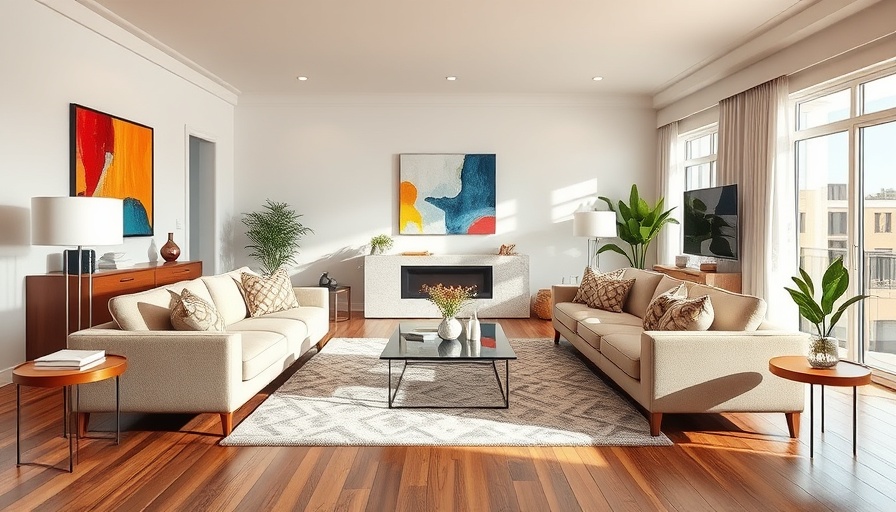
The Importance of Home Staging in Today's Real Estate Market
In a competitive real estate market, the visual appeal of your home can make or break a sale. Home staging is more than just a cosmetic facelift; it's a strategic method intended to showcase a property’s strengths while minimizing flaws. When executed effectively, staging can create an immediate emotional connection with potential buyers, allowing them to envision their lives within the space.
Understanding Home Staging: More Than Just Decoration
Home staging involves a combination of cleaning, decluttering, and decorating that presents the home in its best light. According to experts, a well-staged home operates on the principle that the buyer should feel welcomed and able to imagine living there. Notably, staged homes often sell faster—and can fetch higher prices—compared to their unstaged counterparts. A survey by the National Association of Realtors revealed that 75% of buyers' agents believe staging affects the home’s value, emphasizing the importance of this practice in attracting significant offers.
Essential Tips for Effective Home Staging
To maximize your home’s appeal, here are five pivotal tips:
1. Enhance Curb Appeal
First impressions matter. Ensuring that your home has inviting curb appeal is crucial. Start with simple upgrades such as refreshing the paint on your front door, mowing the lawn, and adding potted plants. Even minor improvements like replacing outdated light fixtures or mailbox can have a noticeable impact.
2. Declutter and Depersonalize
Removing personal items and excess furniture can create a clean slate that allows buyers to envision their own lives in the space. Less clutter equates to more space, making rooms appear larger and more functional. Focus on storage solutions to keep things organized and visually appealing.
3. Create Purpose in Every Room
Each room should have a clear purpose. If a space is designed as a bedroom but is currently filled with exercise equipment, it may confuse potential buyers. Rearranging or repurposing furniture can help to define the spaces clearly and foster a sense of purpose.
4. Use Neutral Tones
While you may love vibrant colors, using neutral tones enhances the appeal of your home to a larger audience. Neutral colors can brighten spaces and make them feel larger, allowing potential buyers to see the innate beauty of the home rather than focusing on personal aesthetic preferences.
5. Highlight Key Features
Identify and emphasize unique features of your home that could attract buyers. If you have a fireplace, arrange furniture to make it a focal point. For a spacious kitchen, ensure there’s enough room for movement and visualize cooking or family gatherings by setting the table or placing fresh produce on countertops.
The ROI of Staging
Investing in home staging often translates to quicker sales and better offers. Spending on staging typically yields a high return on investment—some studies suggest that staged homes sell for 6-25% more than unstaged homes. Buyers gravitate towards homes that feel move-in ready, which ultimately diminishes the time a property sits on the market.
Avoid Common Staging Mistakes
Avoid the pitfall of overcrowding a space with furniture or artwork. Too much can turn buyers away as they struggle to visualize how their belongings would fit. Additionally, remember to maintain an inviting fragrance in the home. A pleasant scent can significantly elevate a buyer's experience.
In Conclusion: The Power of Staging
Learning how to effectively stage your home can significantly enhance its selling potential. Whether you are selling a cozy bungalow or a luxury estate, appealing to the sensibilities of potential buyers is essential. Ensure your home is not just a place where you live, but a canvas that allows buyers to imagine their future. As you prepare to showcase your property, consider reaching out to real estate professionals for guidance tailored to your specific neighborhood and property type.
 Add Row
Add Row  Add
Add 



Write A Comment